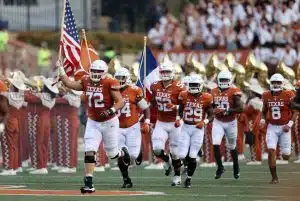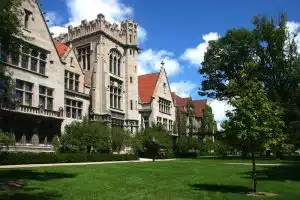Comparing Williams College vs Washington University in St. Louis
Choosing the right college can be a daunting and overwhelming task. With so many options out there, it is important to research and compare each school to find the one that is the best fit for you. This article will compare Williams College vs Washington University in St. Louis across various categories, including location, academics, student life, research opportunities, athletics, alumni network, and financial aid. By the end, you will have a better understanding of each school and hopefully be able to make a more informed decision about which college to attend.
Introduction between Williams College vs Washington University in St. Louis
Williams College, located in Williamstown, Massachusetts, is a private liberal arts college known for its small class sizes, highly engaged and accomplished faculty, and scenic surroundings in the Berkshires. Washington University in St. Louis, located in St. Louis, Missouri, is a private research university with a strong undergraduate program, world-renowned graduate schools, and a vibrant student community. Let’s dive into the details and compare these two schools in greater depth.
Williams College has a student body of approximately 2,000 students, while Washington University in St. Louis has a much larger student body of over 15,000 students. Despite the difference in size, both schools offer a wide range of academic programs and extracurricular activities to their students. Williams College is known for its strong programs in the humanities and social sciences, while Washington University in St. Louis is known for its strengths in the sciences and engineering. Additionally, both schools have a commitment to diversity and inclusion, with active programs and initiatives aimed at creating a welcoming and supportive community for all students.
Location and Campus Comparison
Williams College and Washington University in St. Louis have vastly different locations. Williams is nestled in the heart of the Berkshires, a picturesque region of Western Massachusetts known for its stunning natural beauty and opportunities for outdoor recreation. Washington University, on the other hand, is located in the heart of metropolitan St. Louis, a bustling city known for its diverse communities, thriving arts scene, and cutting-edge research opportunities.
Both schools have beautiful and well-maintained campuses, with significant investments in new facilities and renovations. At Williams College, much of campus life centers around the historic Main Street and the Purple Valley, while at Washington University, the recently built Danforth Campus features modern architecture and amenities.
Despite their differences in location, both Williams College and Washington University offer unique opportunities for students. Williams College’s location in the Berkshires provides students with access to world-class hiking, skiing, and other outdoor activities. The college also has a strong focus on sustainability, with initiatives such as a campus-wide composting program and a student-run farm.
At Washington University, students have access to a vibrant city with a rich cultural scene. The university is home to the Mildred Lane Kemper Art Museum, which houses over 7,800 works of art, and the Edison Theatre, which hosts a variety of performances throughout the year. Additionally, Washington University is committed to community engagement, with programs such as the Gephardt Institute for Civic and Community Engagement, which connects students with local organizations and initiatives.
Academic Programs and Curriculum Comparison
Williams College and Washington University in St. Louis are both highly regarded academic institutions, but they differ in their academic programs and curriculum. Williams College is a private liberal arts college, meaning that students are required to take a variety of courses across different disciplines. The college offers majors in over 25 different fields, ranging from English and Mathematics to Environmental Studies and Africana Studies. Washington University offers over 90 different majors across seven different undergraduate schools. These programs include engineering, business, arts, sciences, and more.
Despite the differences in the number of majors offered, both Williams College and Washington University in St. Louis provide students with ample opportunities to pursue their academic interests. Williams College’s liberal arts curriculum allows students to explore a wide range of subjects, while also developing critical thinking and communication skills. On the other hand, Washington University’s diverse range of majors allows students to specialize in their chosen field and gain practical skills that are relevant to their future careers.
Another notable difference between the two institutions is their approach to research. Williams College places a strong emphasis on undergraduate research, with many students working closely with faculty members on research projects. In contrast, Washington University is a major research institution, with extensive resources and facilities for research across various fields. This provides students with opportunities to engage in cutting-edge research and contribute to the advancement of knowledge in their respective fields.
Student Life and Social Scene Comparison between Williams College vs Washington University in St. Louis
Williams College and Washington University in St. Louis have different student life and social scenes, with each school offering unique opportunities to its students. Williams College is known for its tight-knit community and vibrant social scene, with a variety of student-led clubs, organizations, and events. The college also has a strong tradition of athletics and hosts numerous intramural and varsity sports teams. Washington University, on the other hand, has a larger student population and offers a wider range of extracurricular activities, including student government, volunteer organizations, and cultural and social groups. The university also offers a thriving Greek life scene, with a variety of fraternities and sororities.
Additionally, Williams College has a unique housing system where students live in small, residential houses with their peers and a faculty member who serves as a house advisor. This fosters a strong sense of community and allows for close relationships between students and faculty outside of the classroom. In contrast, Washington University has a more traditional dormitory-style housing system, but offers a variety of housing options including themed living communities and apartment-style living for upperclassmen.
Admission Process and Acceptance Rates Comparison
Getting into Williams College or Washington University in St. Louis is no easy feat – both schools are highly selective and have competitive admission rates. Williams College has an acceptance rate of around 12%, while Washington University’s acceptance rate is around 14%. Both schools look for a diversity of backgrounds, experiences, and interests in their applicants, and place emphasis on academic achievement and extracurricular involvement.
However, the admission process and acceptance rates are not the only factors to consider when choosing between these two prestigious institutions. Williams College is a small liberal arts college located in rural Massachusetts, while Washington University is a larger research university located in an urban setting. This difference in location and size can greatly impact the student experience and opportunities available.
Additionally, Williams College has a strong focus on undergraduate education, with a student-to-faculty ratio of 7:1 and a commitment to small class sizes. On the other hand, Washington University has a larger graduate program and a greater emphasis on research, which can provide unique opportunities for undergraduate students to get involved in cutting-edge research projects.
Faculty and Student Ratio Comparison
One of the benefits of attending a small liberal arts college like Williams is its low faculty-to-student ratio. The college has a 7:1 student-faculty ratio, which allows for close collaboration and mentorship opportunities between students and professors. Washington University, while larger, still maintains a relatively small student-faculty ratio of 8:1. The university also has a highly accomplished and diverse faculty, with over 2,000 full-time faculty members across various departments and schools.
Additionally, both Williams and Washington University prioritize undergraduate education and offer small class sizes, ensuring that students receive personalized attention and support from their professors. This focus on undergraduate education is reflected in the high graduation rates of both institutions, with Williams boasting a 94% graduation rate and Washington University a 93% graduation rate.
Research Opportunities Comparison
Williams College and Washington University in St. Louis both offer numerous opportunities for undergraduate research and intellectual exploration. Williams College, in particular, emphasizes the importance of undergraduate research and offers a range of research-focused programs and initiatives. These include the Summer Science Research Program, the Mellon Mays Undergraduate Fellowship Program, and the Williams College Science Fellows Program. Washington University has a strong tradition of research excellence, with numerous research centers and institutes across various fields. The university also has a robust Office of Undergraduate Research that supports and funds student research projects.
Additionally, Williams College has a unique program called the Williams-Exeter Programme at Oxford, which allows students to conduct research at the University of Oxford in England. This program provides students with the opportunity to work with leading researchers in their field and gain international research experience.
On the other hand, Washington University offers a program called the Discovery Fellowship, which provides funding for students to conduct research during the summer after their first year. This program is designed to help students explore their research interests early on in their academic career and provides them with the resources they need to pursue their passions.
Athletics Programs Comparison between Williams College vs Washington University in St. Louis
Williams College and Washington University in St. Louis have different athletic programs and traditions. Williams College has a strong tradition of athletics, with numerous varsity sports teams and a strong intramural program. The college is a member of the New England Small College Athletic Conference (NESCAC) and has won numerous national championships across various sports. Washington University, while not known for its athletics programs, still offers a range of varsity sports teams and opportunities for students to stay active and engaged.
One of the unique aspects of Williams College’s athletics program is its emphasis on the “Eph” nickname. The nickname is derived from the school’s founder, Ephraim Williams, and is used to refer to all of the college’s sports teams. This creates a strong sense of community and pride among athletes and fans alike.
On the other hand, Washington University has a strong focus on fitness and wellness for all students, not just athletes. The university offers a variety of fitness classes, intramural sports, and outdoor recreation opportunities. This allows students to stay active and healthy, even if they are not interested in participating in varsity sports.
Alumni Network and Career Services Comparison
Williams College and Washington University in St. Louis both have strong alumni networks and career services programs. Williams College has a strong tradition of alumni involvement and support, with various alumni-funded programs and initiatives. The college also has a robust Career Center that offers job and internship search resources, interview and resume preparation, and alumni networking opportunities. Similarly, Washington University has a strong alumni network across various industries and professions. The university’s Career Center offers a range of career counseling and job search services, as well as numerous networking events and opportunities.
One notable difference between the two schools’ alumni networks is the size and scope. Williams College has a smaller alumni network, but it is known for its close-knit community and strong connections among alumni. In contrast, Washington University has a larger alumni network that spans across the globe, providing students with a wider range of networking opportunities.
Another difference is the focus of the career services programs. Williams College’s Career Center places a strong emphasis on helping students explore their interests and passions, and finding career paths that align with those interests. On the other hand, Washington University’s Career Center focuses more on providing students with practical skills and experiences that will help them succeed in their chosen fields.
Financial Aid and Scholarship Opportunities Comparison
Both Williams College and Washington University in St. Louis offer a range of financial aid and scholarship opportunities to their students. Williams College, in particular, has a strong commitment to need-based financial aid, with 55% of students receiving some form of financial assistance. The college also offers a range of merit-based scholarships, including the prestigious Williams College Scholarships in the Arts and Humanities. Washington University has a similarly strong commitment to financial aid, with 46% of its students receiving need-based aid. The university also offers a range of merit-based scholarships, including the Danforth Scholars Program and the John B. Ervin Scholars Program.
It is important to note that both Williams College and Washington University in St. Louis have specific eligibility requirements for their financial aid and scholarship programs. For example, Williams College requires students to submit the CSS Profile in addition to the FAFSA to be considered for need-based aid. Washington University, on the other hand, requires students to submit the CSS Profile and the Noncustodial PROFILE for divorced or separated parents. It is important for prospective students to carefully review the eligibility requirements for each school’s financial aid and scholarship programs to determine which options may be available to them.
Diversity and Inclusion on Campus Comparison
Diversity and inclusion are important values at both Williams College and Washington University in St. Louis. Williams College has a diverse student body, with over 40% of its students identifying as students of color. The college has various initiatives and programs in place to promote diversity and inclusion, including the Multicultural Center and the Davis Center. Washington University similarly values diversity and inclusion, with a diverse student body and numerous programs and initiatives focused on promoting equity and inclusion on campus.
One notable difference between the two institutions is the approach to diversity and inclusion in the curriculum. Williams College has a requirement for all students to take at least one course in a designated “diversity and social justice” category, which includes topics such as race, gender, sexuality, and class. This requirement ensures that all students engage with issues of diversity and inclusion in their academic coursework. Washington University, on the other hand, does not have a specific diversity requirement, but offers a range of courses and programs that address issues of diversity and inclusion across various disciplines.
Student Testimonials and Experiences at Williams College
Many students at Williams College describe their experience as transformative and life-changing. They value the close-knit community, rigorous academic programs, and abundant extracurricular opportunities. Students appreciate the personalized attention and mentorship they receive from their professors and advisors, as well as the emphasis on undergraduate research and intellectual exploration.
One unique aspect of Williams College is its commitment to diversity and inclusion. Students from all backgrounds are welcomed and supported, and the college actively works to create a campus culture that celebrates differences and promotes equity. This commitment is reflected in the curriculum, which includes courses on race, gender, and social justice, as well as in the many student-led organizations and events that promote diversity and inclusion. Students often cite this aspect of their Williams experience as one of the most meaningful and impactful.
Student Testimonials and Experiences at Washington University in St. Louis
Similarly, many students at Washington University in St. Louis value the diverse and inclusive community, rigorous academic programs, and dynamic extracurricular activities. They appreciate the opportunities to engage in research, volunteerism, and leadership, and value the university’s commitment to career development and post-graduation success.
Furthermore, students at Washington University in St. Louis also appreciate the university’s emphasis on interdisciplinary learning. Many students take advantage of the opportunity to explore different fields of study and collaborate with students and faculty from diverse backgrounds. This approach to education allows students to develop a well-rounded perspective and prepares them for success in a rapidly changing world.
In addition, Washington University in St. Louis is known for its strong sense of community and support system for students. From academic advising to mental health resources, the university provides a range of services to ensure that students feel supported and empowered throughout their college experience. This supportive environment fosters a sense of belonging and encourages students to take risks and pursue their passions.
Prospective Student Considerations: Which College is Best for You?
Choosing between Williams College and Washington University in St. Louis ultimately comes down to your personal priorities and preferences. Do you value a small, close-knit community with an emphasis on undergraduate research, or a larger, more diverse community with a wider range of academic programs and extracurricular activities? Do you prefer a rural, remote location or a bustling urban environment? Consider these factors and others when making your decision.
Another important factor to consider when choosing between Williams College and Washington University in St. Louis is the cost of attendance. While both schools offer generous financial aid packages, the total cost of attendance can vary significantly. Williams College has a higher sticker price, but also has a larger endowment and may be able to offer more need-based aid. On the other hand, Washington University in St. Louis has a lower sticker price and may be a more affordable option for some students. Be sure to research and compare the total cost of attendance, including tuition, fees, room and board, and other expenses, before making your final decision.
Conclusion: Final Thoughts on Comparing Williams College and Washington University in St. Louis
Comparing Williams College and Washington University in St. Louis reveals a lot about each school’s strengths and values. Both institutions offer unique and valuable opportunities to their students, from in-depth research projects to vibrant student life communities. Ultimately, it is up to the individual student to determine which school is the best fit for their goals, interests, and priorities. Regardless of which school you choose, you can be sure that you will be receiving a world-class education and be part of an amazing community of thinkers, innovators, and change-makers.
One factor that may influence a student’s decision between Williams College and Washington University in St. Louis is location. Williams College is located in a small town in western Massachusetts, while Washington University is located in a bustling city in Missouri. Some students may prefer the quiet, close-knit community of Williams College, while others may thrive in the urban environment of Washington University.
Another important consideration is the size of the student body. Williams College has a much smaller student body than Washington University, with just over 2,000 undergraduate students compared to over 7,000 at Washington University. This may appeal to students who prefer a more intimate learning environment, where they can form close relationships with their professors and peers.










































